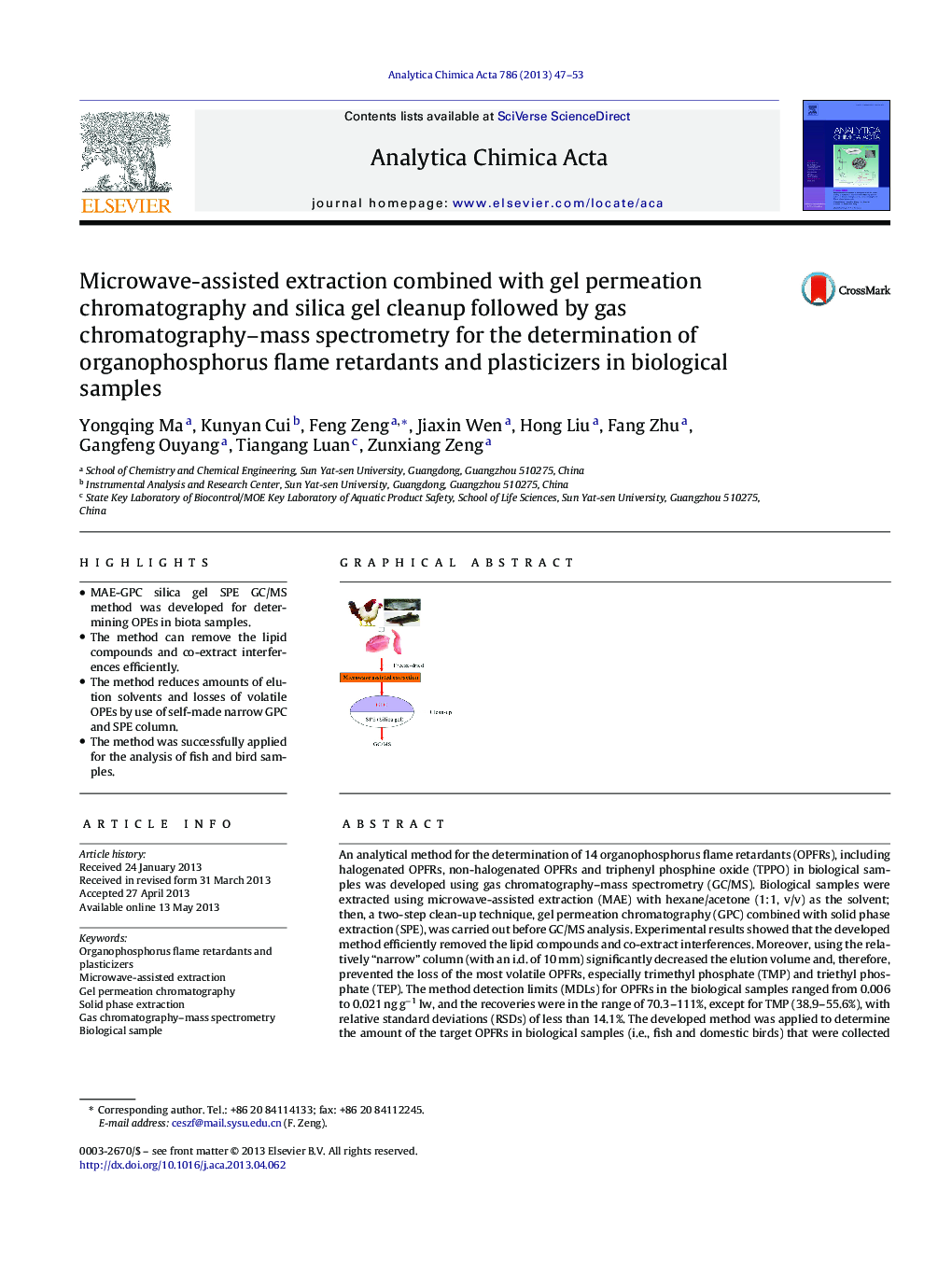| کد مقاله | کد نشریه | سال انتشار | مقاله انگلیسی | نسخه تمام متن |
|---|---|---|---|---|
| 1164687 | 1491046 | 2013 | 7 صفحه PDF | دانلود رایگان |

• MAE-GPC silica gel SPE GC/MS method was developed for determining OPEs in biota samples.
• The method can remove the lipid compounds and co-extract interferences efficiently.
• The method reduces amounts of elution solvents and losses of volatile OPEs by use of self-made narrow GPC and SPE column.
• The method was successfully applied for the analysis of fish and bird samples.
An analytical method for the determination of 14 organophosphorus flame retardants (OPFRs), including halogenated OPFRs, non-halogenated OPFRs and triphenyl phosphine oxide (TPPO) in biological samples was developed using gas chromatography–mass spectrometry (GC/MS). Biological samples were extracted using microwave-assisted extraction (MAE) with hexane/acetone (1:1, v/v) as the solvent; then, a two-step clean-up technique, gel permeation chromatography (GPC) combined with solid phase extraction (SPE), was carried out before GC/MS analysis. Experimental results showed that the developed method efficiently removed the lipid compounds and co-extract interferences. Moreover, using the relatively “narrow” column (with an i.d. of 10 mm) significantly decreased the elution volume and, therefore, prevented the loss of the most volatile OPFRs, especially trimethyl phosphate (TMP) and triethyl phosphate (TEP). The method detection limits (MDLs) for OPFRs in the biological samples ranged from 0.006 to 0.021 ng g−1 lw, and the recoveries were in the range of 70.3–111%, except for TMP (38.9–55.6%), with relative standard deviations (RSDs) of less than 14.1%. The developed method was applied to determine the amount of the target OPFRs in biological samples (i.e., fish and domestic birds) that were collected from the Pearl River Delta (PRD) region in southern China. Of the 14 OPFRs, tri-n-butyl phosphate (TnBP), tris(2-chloroethyl) phosphate (TCEP), tris(chloropropyl) phosphate (TCPP) and tributoxyethyl phosphate (TBEP) were present in all of the biological samples that were analyzed, and dominated by TnBP, TCEP and TBEP. The concentrations of OPFRs in the biological samples that were collected from the PRD region were higher than those reported in other locations.
Figure optionsDownload as PowerPoint slide
Journal: Analytica Chimica Acta - Volume 786, 5 July 2013, Pages 47–53